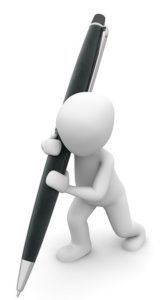 Applying for a job can be difficult and time-consuming. It’s tempting to skip the cover letter and focus on writing your resume. However, it’s vital that you give your cover letter just as much attention. Your resume provides a detailed list of your qualifications. The cover letter goes one step further, providing the narrative that ties your experiences together and presents you as the best candidate for the position.
Applying for a job can be difficult and time-consuming. It’s tempting to skip the cover letter and focus on writing your resume. However, it’s vital that you give your cover letter just as much attention. Your resume provides a detailed list of your qualifications. The cover letter goes one step further, providing the narrative that ties your experiences together and presents you as the best candidate for the position.
Purpose of a Cover Letter
A cover letter is simply a business letter that is sent with your resume when you apply for a job. It explains to the potential employer which position you are applying for and how you meet the qualifications they are seeking. Your cover letter should answer two basic questions:
- Why are you the right fit for the job?
- How will you add value to the organization?
The ultimate goal is to catch the attention of the reader and convince them to both review your resume and offer you a job interview. You’re also demonstrating your writing and communication skills.
Strategies for Success
- Research the employer. Familiarize yourself with the organization, and tailor your cover letter accordingly.

- Review the job posting. Highlight experiences in your resume that align with the most important qualifications.
- Market yourself. Think about what you could write that would convince the employer that you are the best candidate for the job.
- Be brief but specific. Keep your cover letter to one page or less. Avoid flowery language and overuse of the pronoun “I”. Instead, use lots of action words.
- Create a professional appearance. Use business format. Match the font type and size from your resume. Have at least one person proofread.
What to Include In a Cover Letter
Your opening paragraph should explain:
- Why you’re writing
- The position you’re applying for
- How you found out about the job.
 You may also choose to include a brief statement with something positive about the company, like what inspired you to apply for the position.
You may also choose to include a brief statement with something positive about the company, like what inspired you to apply for the position.
The body should include one or two paragraphs that highlight specific professional or volunteer experiences, education, and personal attributes that demonstrate your ability to excel at the position. Experiences and skills you discuss should relate directly to the job description. Don’t repeat your resume. Rather, use a few impressive examples to emphasize your strengths and abilities.
In your final paragraph, you should:
- Summarize why you’re a solid match for the job
- Request a job interview
- Describe how and when you can be contacted
- Thank the reader for their time and consideration
Final Cover Letter Touches
Remember to sign your letter at the bottom. If mailing your application, send your cover letter and resume in a large flat envelope instead of folding. When emailing, your cover letter will be the email you send with your resume attached. If using an online application platform or sending as an attachment, convert all documents to a PDF.


Awesome overview and tips for an outstanding cover letter!
Thank you!